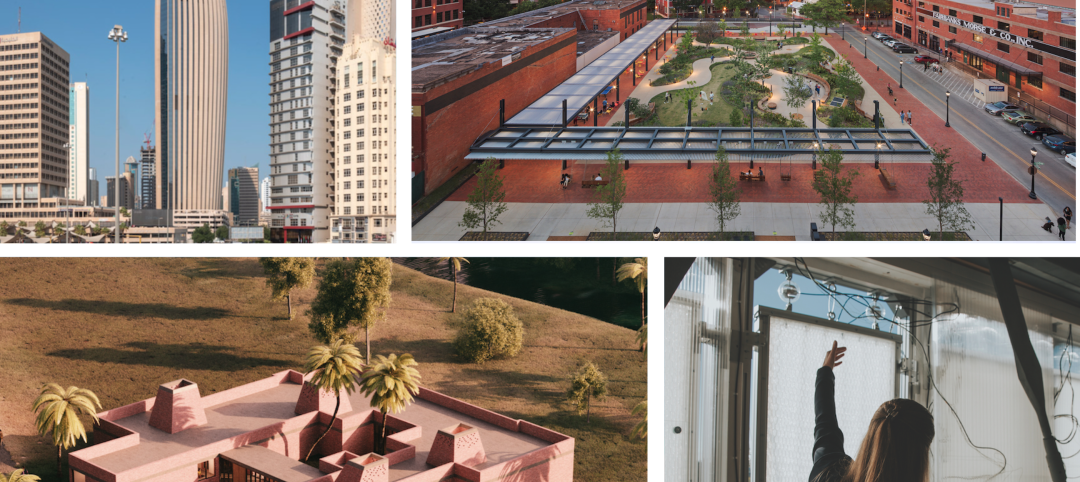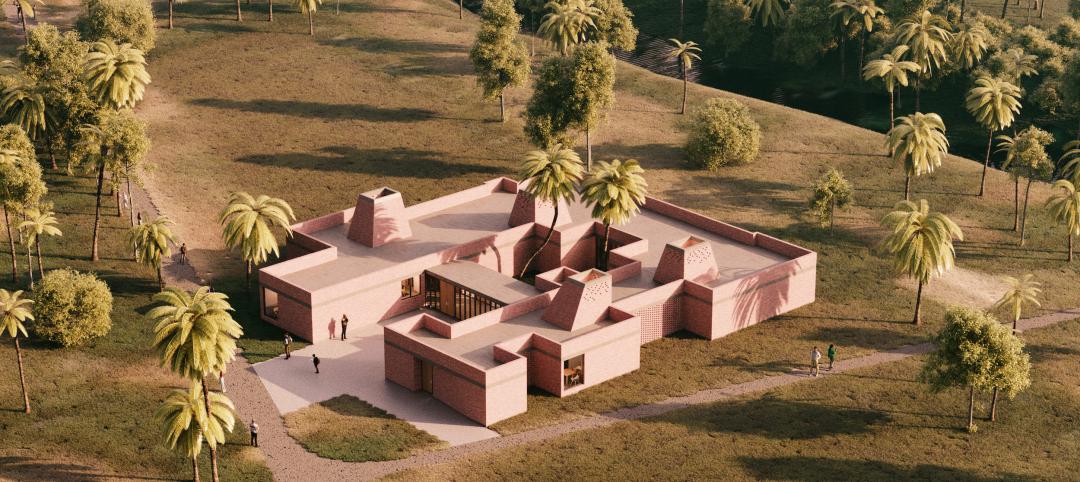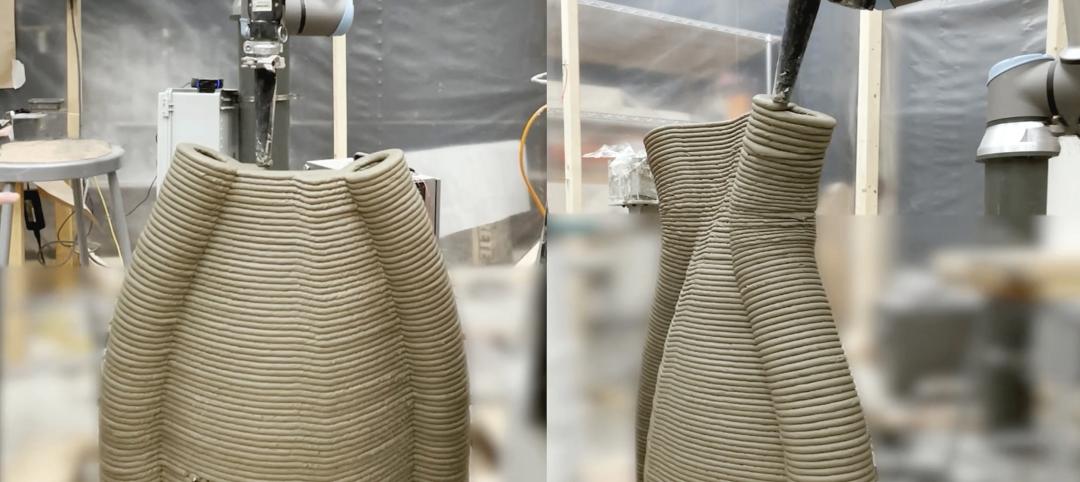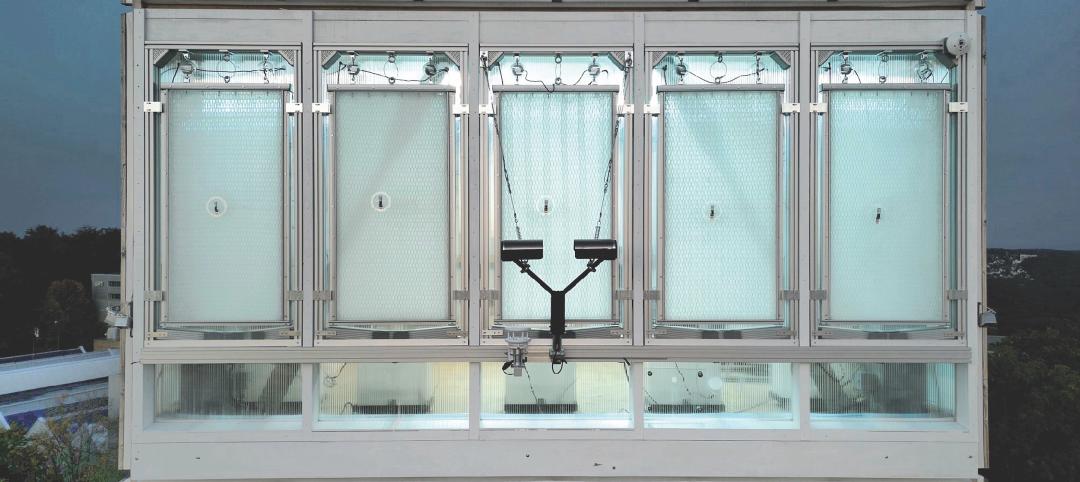In Chesterfield, Mo., a suburb of St. Louis, Forum Studio and design-builder Clayco have created the $54 million, 125,000-sf Mercy Virtual Care Center, a high-tech medical center, innovation think tank, conference center, sales showroom, and office building for Mercy, the nation’s fifth-largest Catholic health system.
The truly innovative aspect of the center is its virtual-care capability, which equips its medical professionals to deliver care at the bedside of patients anywhere. This is especially important for chronically ill patients—diabetic patients, for example—who have been dismissed by the hospital but who need to adjust their medications, report any flare-ups, or just want assurance that they’re doing well—all to avoid costly readmissions.
One such patient is Jim Hoevelmann, 74, who lives 70 miles from the Mercy facility. Hoevelmann suffers from chronic obstructive pulmonary disease, a condition that requires a lot of continuing care. Using his iPad and basic medical test equipment, Hoevelmann can check his vital signs and instantly report them to his care team in Chesterfield. Patients are scheduled for video visits one to three times a week, but they can call the facility at any time.
“24-7, I can call that number and I’ve got somebody helping me, to either change my medication or get me to the hospital, or whatever they decide to do,” he told a reporter from KSDK-TV (http://on.ksdk.com/2adx8Th).
Hoevelmann’s internist, J. Gavin Helton, Medical Director of Ambulatory Care at Mercy, said, “We get to know his medical history, and we build a plan that’s specific to him. Many times we know when something’s happening with Jim before he even knows it.”
Hoevelmann said he got such a call from Helton one Sunday night at 9:30. “He put me on Prednisone that night and by the next morning I was coming out of it again,” he says. “They’ve done that twice.”
CBRE Healthcare’s Patrick Duke says the virtual care center demonstrates Mercy’s organizational entrepreneurship.
“More and more hospital systems are looking to fund operations like this in the face of declining reimbursement,” says Duke, a member of BD+C Editorial Board.
Read about more innovations from BD+C's 2016 Great Solutions Report
Related Stories
Design Innovation Report | Apr 27, 2023
BD+C's 2023 Design Innovation Report
Building Design+Construction’s Design Innovation Report presents projects, spaces, and initiatives—and the AEC professionals behind them—that push the boundaries of building design. This year, we feature four novel projects and one building science innovation.
Design Innovation Report | Apr 19, 2023
Reinforced concrete walls and fins stiffen and shade the National Bank of Kuwait skyscraper
When the National Bank of Kuwait first conceived its new headquarters more than a decade ago, it wanted to make a statement about passive design with a soaring tower that could withstand the extreme heat of Kuwait City, the country’s desert capital.
Design Innovation Report | Apr 19, 2023
HDR uses artificial intelligence tools to help design a vital health clinic in India
Architects from HDR worked pro bono with iKure, a technology-centric healthcare provider, to build a healthcare clinic in rural India.
3D Printing | Apr 11, 2023
University of Michigan’s DART Laboratory unveils Shell Wall—a concrete wall that’s lightweight and freeform 3D printed
The University of Michigan’s DART Laboratory has unveiled a new product called Shell Wall—which the organization describes as the first lightweight, freeform 3D printed and structurally reinforced concrete wall. The innovative product leverages DART Laboratory’s research and development on the use of 3D-printing technology to build structures that require less concrete.
Cladding and Facade Systems | Apr 5, 2023
Façade innovation: University of Stuttgart tests a ‘saturated building skin’ for lessening heat islands
HydroSKIN is a façade made with textiles that stores rainwater and uses it later to cool hot building exteriors. The façade innovation consists of an external, multilayered 3D textile that acts as a water collector and evaporator.
Transportation & Parking Facilities | Mar 23, 2023
Amsterdam debuts underwater bicycle parking facility that can accommodate over 4,000 bikes
In February, Amsterdam saw the opening of a new underwater bicycle parking facility. Located in the heart of the city—next to Amsterdam Central Station and under the river IJ (Amsterdam’s waterfront)—the facility, dubbed IJboulevard, has parking spots for over 4,000 bicycles, freeing up space on the street.
Concrete | Jan 24, 2023
Researchers investigate ancient Roman concrete to make durable, lower carbon mortar
Researchers have turned to an ancient Roman concrete recipe to develop more durable concrete that lasts for centuries and can potentially reduce the carbon impact of the built environment.
Sponsored | Resiliency | Dec 14, 2022
Flood protection: What building owners need to know to protect their properties
This course from Walter P Moore examines numerous flood protection approaches and building owner needs before delving into the flood protection process. Determining the flood resilience of a property can provide a good understanding of risk associated costs.
Giants 400 | Nov 14, 2022
4 emerging trends from BD+C's 2022 Giants 400 Report
Regenerative design, cognitive health, and jobsite robotics highlight the top trends from the 519 design and construction firms that participated in BD+C's 2022 Giants 400 Report.
AEC Tech | Apr 13, 2022
A robot automates elevator installation
Schindler—which manufactures and installs elevators, escalators, and moving walkways—has created a robot called R.I.S.E. (robotic installation system for elevators) to help install lifts in high-rise buildings.















